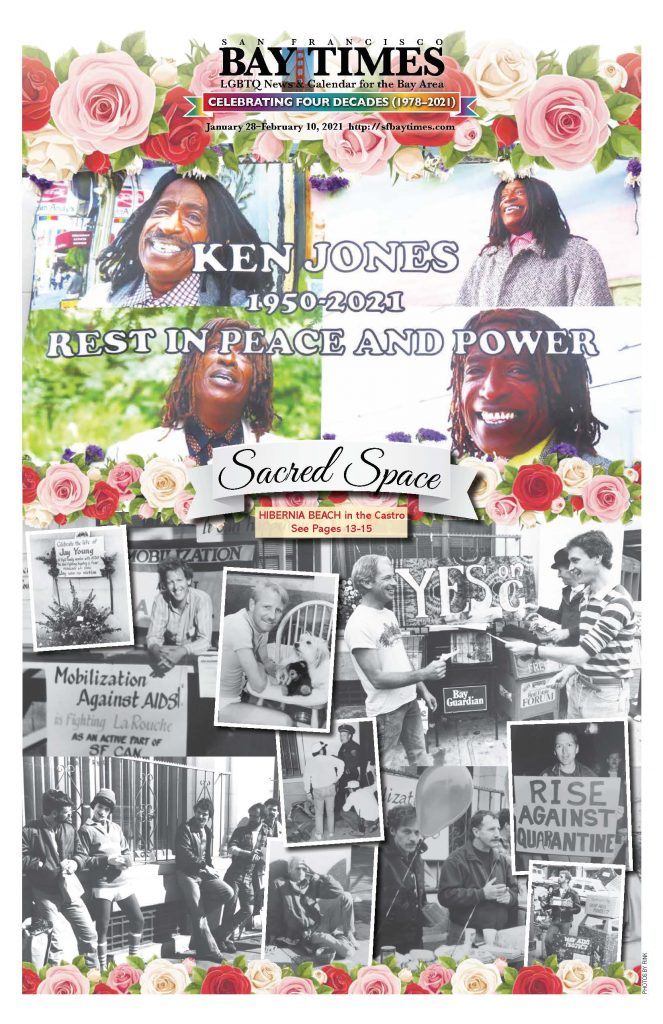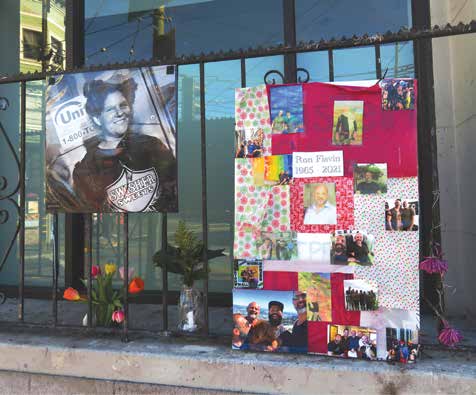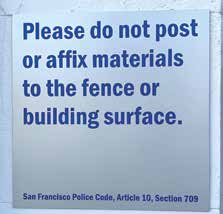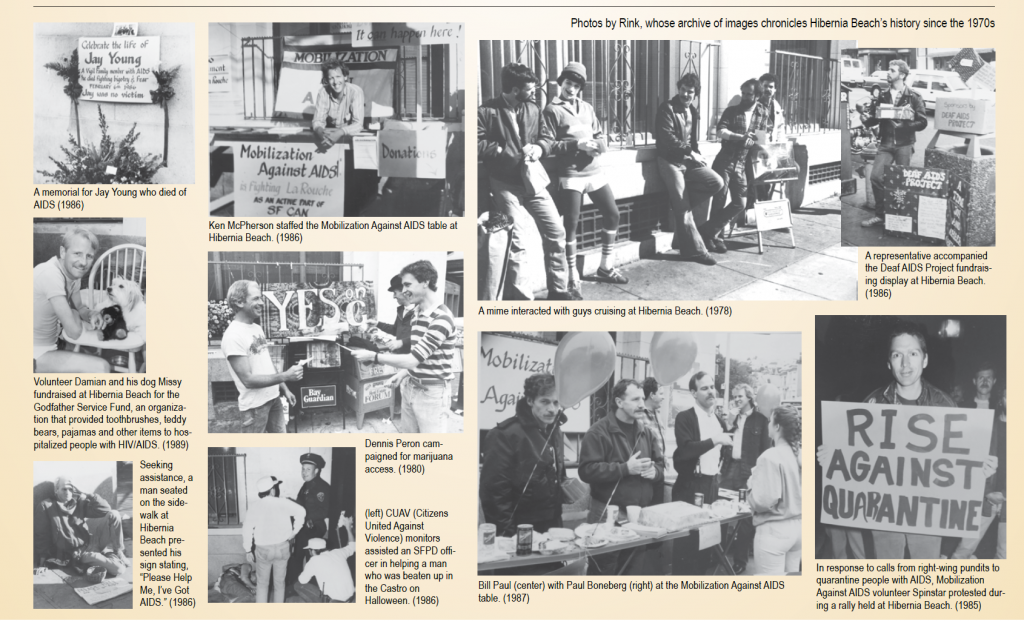
For nearly five decades, the corner of Castro and 18th Streets has been an important site for San Francisco’s LGBTQ community. In 1978, San Francisco Bay Times photographer Rink documented how the location became a hangout for gay men hoping to meet likeminded others in relative safety. Cruisers used to lean against the concrete and iron fencing, and were sometimes joined by the city’s growing number of street entertainers. On sunny days, it is easy to see how the former Hibernia Bank site was dubbed “Hibernia Beach.”
In the early 1980s, Hibernia Beach began to serve another purpose when the HIV/AIDS pandemic ravaged the LGBTQ population and more. By 1983, 3,000 AIDS cases had been reported—a number that would greatly increase in the coming years as the death toll from the virus also spiraled. The site’s wall and rail were then first used to post tributes to those who had passed during the pandemic.


As the years went on, the memorials paid homage to numerous others. Sometimes these were more personal tributes to lost friends and family members. Others marked the passing of public figures such as Princess Diana and Prince. Still others marked the loss of individuals holding particular significance to the LGBTQ community, like Matthew Shepard and the victims of the Pulse nightclub shooting.
In addition to being a site for communal grieving, Hibernia Beach has also served as a spot for meetings, public services—even pet adoptions and Girl Scout cookie sales—and as a place to meet up before heading to other locations. ACT UP, the Sisters of Perpetual Indulgence, Queer Nation, and other LGBTQ groups, both past and present, have extensively relied on the site for various gatherings.
Nearly all who live in, or who regularly visit, the Castro District know about Hibernia Beach, even though it has held no particular official status.
Threat to the Site
Its status from an official standpoint may change, given an action taken on January 15 by the present business at the site, Bank of America. BofA put up signs at Hibernia Beach that read: “Please do not post or affix materials to the fence of building surface.”
The sign further referenced a San Francisco police code (Article 10, Section 709). The code states, in part: “It shall be unlawful for any person to post or affix any sign to the exterior surfaces of any structure, including any building, on private property without consent of the owner of such property or the person in lawful possession of such property. If any sign has been posted in a manner described in this Section and remains so posted on the effective date of this ordinance, it shall be unlawful for any person who so posted it or caused it to be so posted to fail to remove that sign within a reasonable period of time after so being informed.” Violations of the code range from $50–$500.
BofA spokesperson Colleen Haggerty said that the building is undergoing remodeling and that items left at Hibernia Beach had increased during recent months. ATMs at the bank were vandalized late last year.
Public Outcry
Criticism of the attempted Hibernia Beach change was swift from LGBT leaders such as State Senator Scott Wiener, activist Cleve Jones, and Supervisor Rafael Mandelman. Mandelman shared: “I told them (BofA) the signs must come down. And we should find a different answer, probably by bringing the Castro Community Benefits District, the Castro Cultural District, and the Castro Merchants together and finding a way for them to take greater responsibility in the area’s maintenance. We remain in communication with the bank and are working towards that now.”
Haggerty and her team quickly complied and acknowledged the location’s importance as a community space.
The Alice B. Toklas LGBTQ Democratic Club made this statement on January 16: “On behalf of the many members of our community we’ve lost, grieved for, mourned, celebrated the life of, and paid tribute to at Hibernia Beach, the Alice B. Toklas LGBTQ Democratic Club thanks everyone that brought this issue to our attention, and is especially grateful to District 8 Supervisor Rafael Mandelman for his commitment to ensuring we can continue to honor those we’ve lost at this very sacred site in the heart of the Castro.”
On January 18, the Harvey Milk LGBTQ Democratic Club hosted a gathering at Hibernia Beach “to reclaim this living cultural heritage site for the community.” Those who gathered included historian Gerard Koskovich and activist Alex U Inn. Many honored recently passed activist Ken Jones as well as Martin Luther King, Jr., and others. They brought flowers, tea lights, photos of loved ones, and other relevant items.
Future of Hibernia Beach
Legislators such as Supervisor Mandelman and Senator Wiener have indicated that Hibernia Beach may gain official protection in future. It is possible that it will receive landmark status, a designation given to a building or a plot of land said to have historic, artistic, or aesthetic value. The location would then receive special treatment with regards to its preservation.
For the countless individuals who value Hibernia Beach, however, the location’s status has never been in doubt. From a safe spot for cruising to a known location for memorials, the site has gained meaning that goes far beyond that of a community gathering place. It is sacred space marking life and loss, and the San Francisco Bay Times joins those calling for it to be safeguarded in an appropriate way for generations to come.

Published on January 28, 2021
Recent Comments